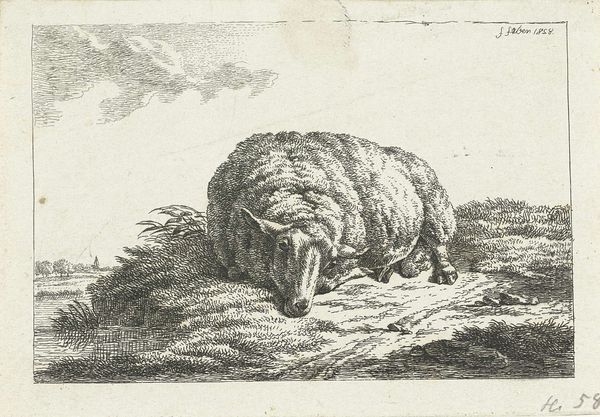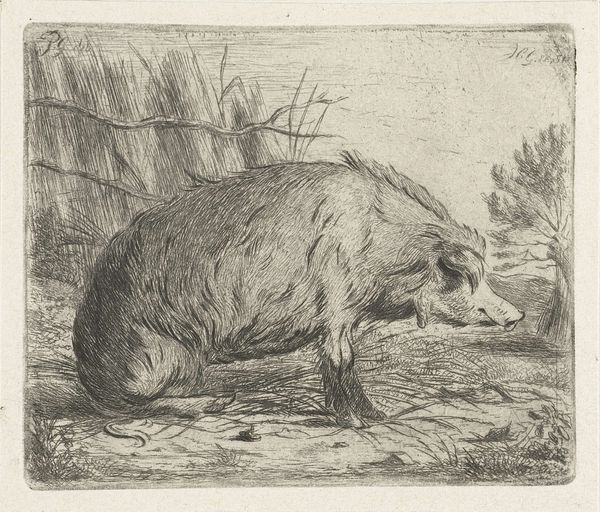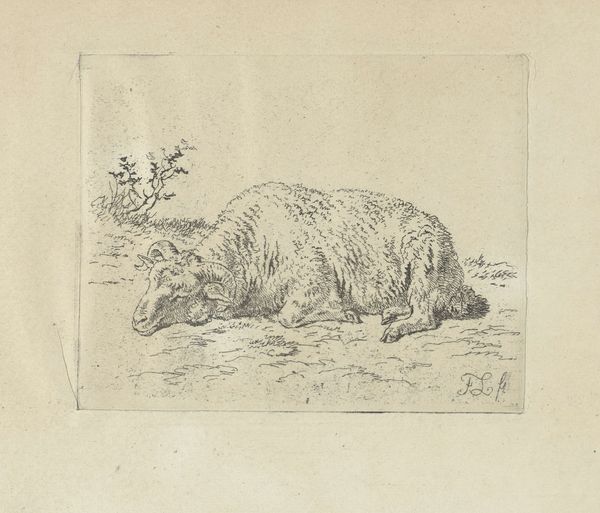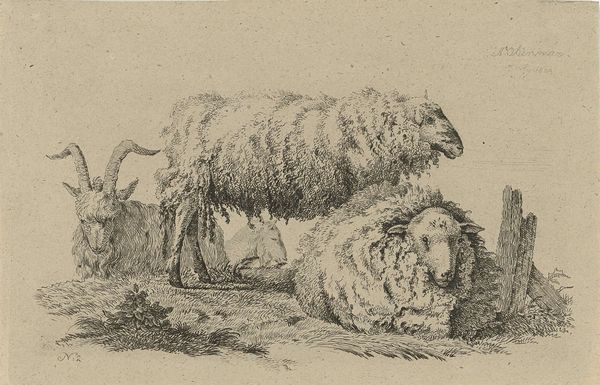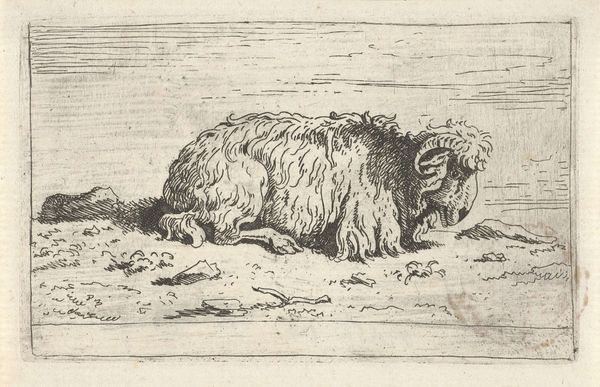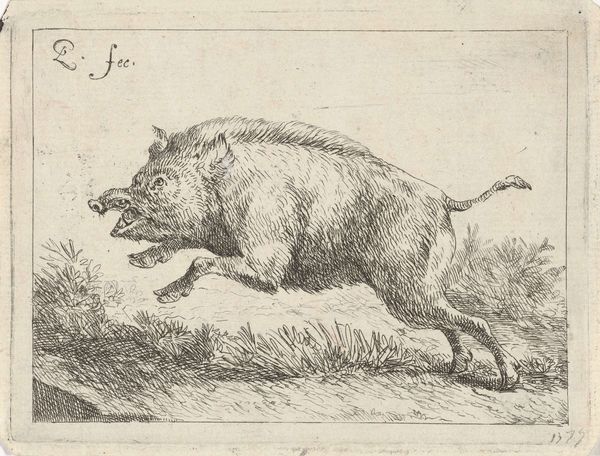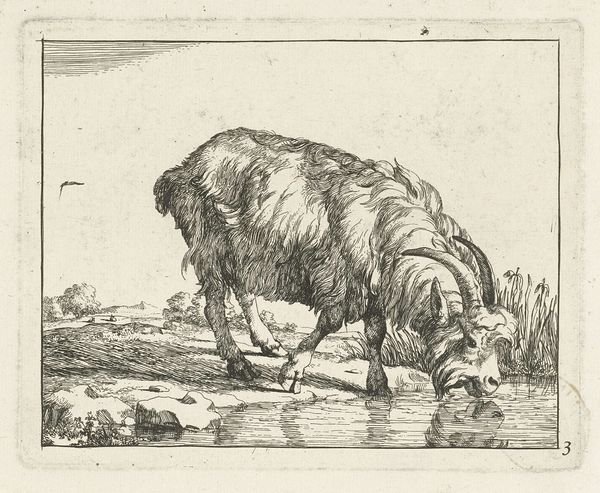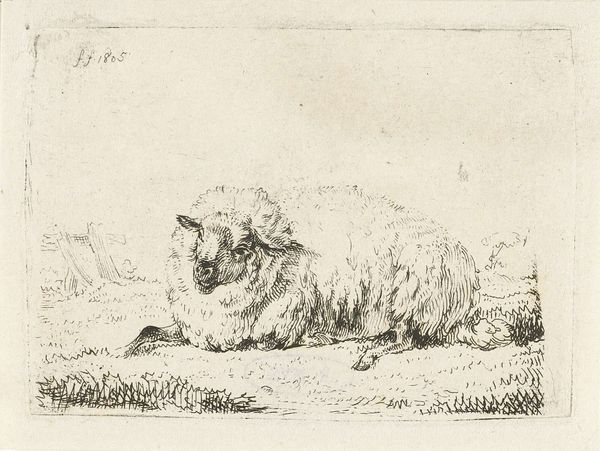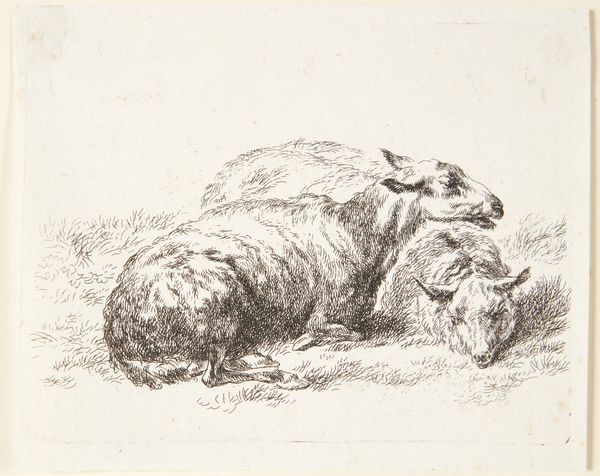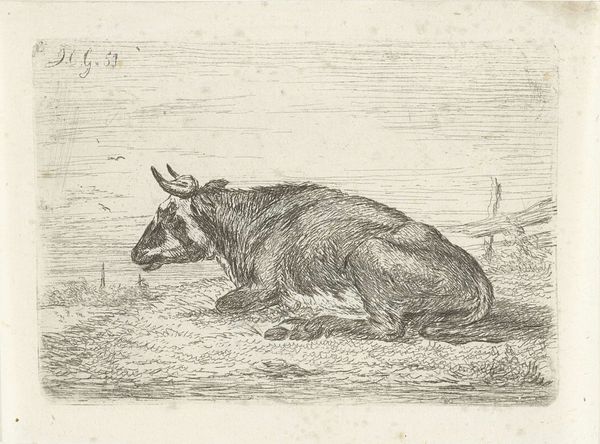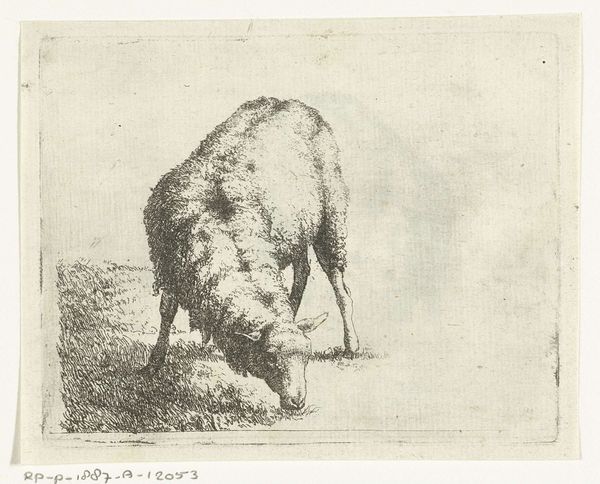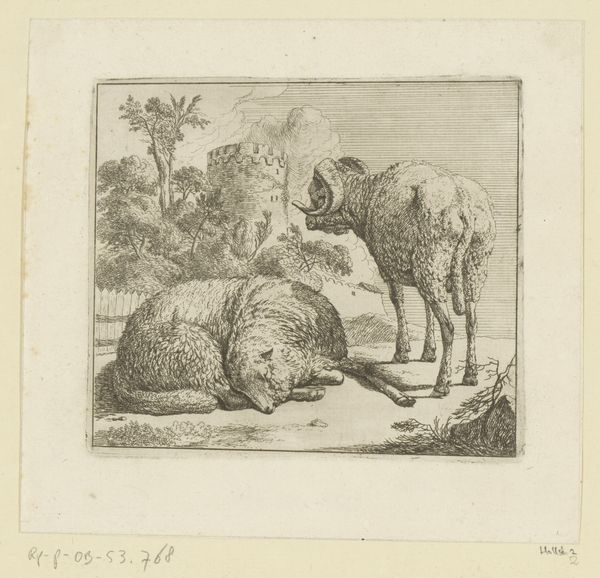
drawing, print, engraving
#
drawing
#
animal
# print
#
landscape
#
engraving
#
realism
Dimensions: height 84 mm, width 121 mm
Copyright: Rijks Museum: Open Domain
Editor: This is "Liggend schaap," or "Lying Sheep," an engraving by Pieter Roosing made sometime between 1811 and 1839. It's a surprisingly tender image. What stands out to you? Curator: Well, the sheep as a symbol has accrued so much cultural weight over millennia. Think of its frequent association with sacrifice, purity, or even blind obedience in religious and secular contexts. This particular image seems to invite us to reflect on those inherited meanings. Editor: I hadn't thought of it that way. So, you're saying that Roosing's choice of subject matter—a simple sheep—carries a lot of symbolic baggage? Curator: Precisely! And the artist invites you to reflect. Consider how the sheep is depicted: it is passive, restful. It suggests a particular kind of humility, a yielding. But also think about how that might be viewed differently across cultures. What one culture idealizes as peaceful submission, another might interpret as weakness. Editor: It makes you wonder what Roosing intended to convey with this image, doesn't it? Was he aware of these cross-cultural associations? Curator: That's the fascinating part. He’s inviting us into this cultural memory. By presenting it so simply, Roosing avoids taking a definitive position. He’s holding up a mirror to our own associations, compelling us to engage in critical thinking about faith, innocence, and the complex ways in which societies project values onto animals. Editor: So much symbolism in one small engraving. Thanks! I'll never look at a sheep the same way again. Curator: My pleasure. Indeed, once we begin to recognize these recurring visual threads, we understand just how much our understanding of even a simple image relies on history and culture.
Comments
No comments
Be the first to comment and join the conversation on the ultimate creative platform.
